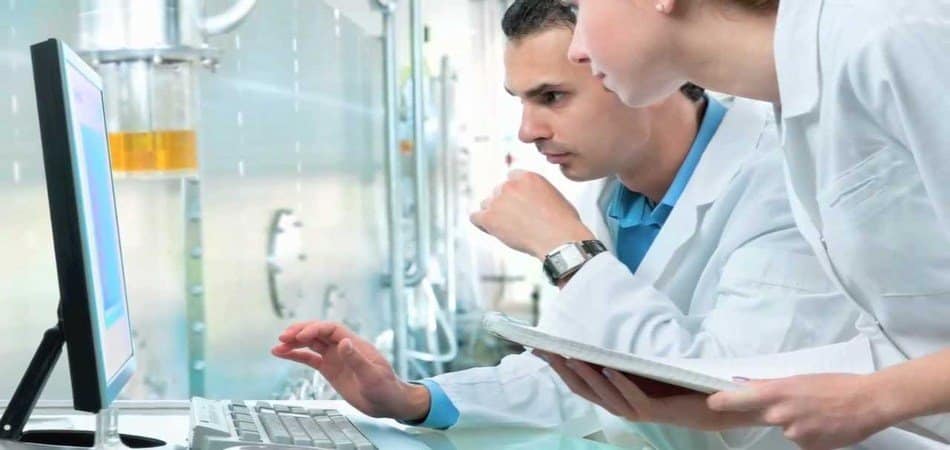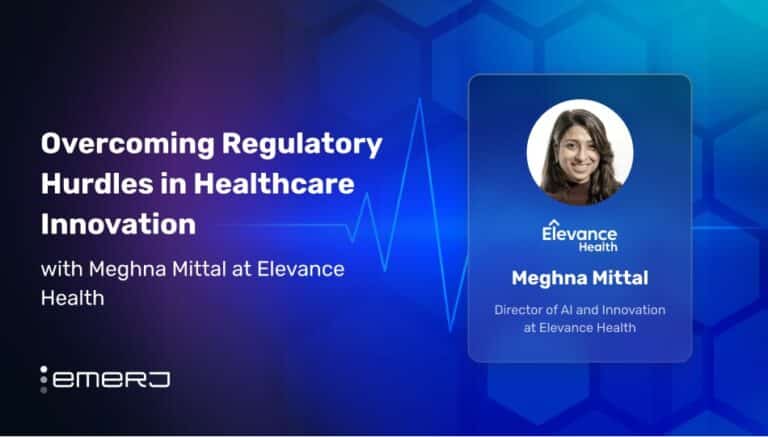Episode Summary: This week on AI in Industry, we speak with Amir Saffari, Senior Vice President of AI at BenevolentAI, a London-based pharmaceutical company that uses machine learning to find new uses for existing drugs and new treatments for diseases.
In speaking with him, we aim to learn two things:
- How will machine learning play a role in the phases of drug discovery, from generating hypotheses to clinical trials?
- In the future, what are the roles of man and machine in drug discovery? What processes will machines automate and potentially do better than humans in this field?
We hope the insights in this episode provide business leaders in the pharma industry with an understanding of the current state of AI in their space and where it might play a role in their industry in the next two to three years.
Subscribe to our AI in Industry Podcast with your favorite podcast service:
Guest: Amir Saffari, Senior Vice President of AI at BenevolentAI
Expertise: machine learning, computer vision, deep learning, natural language processing, and Big Data
Brief Recognition: Dr. Amir Saffari serves as Senior Vice President of Artificial Intelligence at BenevolentAI Ltd and has been working in the AI field for more than 15 years. Prior to BenevolentAI, he served as Head of Machine Intelligence at Import.io and Director of Research at Affectv. Earlier in his career, he worked as a computer vision and machine learning scientist at Sony Computer Entertainment Europe and as a researcher at Technische Universitat Graz. He holds a PhD in Computer Science from the same university.
Interview Highlights
(03:15) What are the biggest problems in the scientific process of drug discovery where AI might be able to help?
Amir Saffari: If you look into drug discovery where our company has been focusing, the whole process from ideas to manufacturing drugs is fairly complex. If you look at the industry and how it is organizing these steps, there is little use of data to make decisions. These are opportunities for machine learning to step in to generate ideas, hypotheses, design experiments and accelerate the scientific process.
(05:15) In your opinion, what parts of the processes need to be revamped?
AS: Many of the entities we are interested in have physical realities such as a gene or drug compound. As you start moving toward diseases, there is little reality. You might classify a disease based on symptoms, among others. But if you want to take machine learning into it, you must question if you can use data to define what the disease is.
If you are trying a compound on a population of patients and receive different responses, what makes them different? I think of this as a machine learning problem. Can I use the data to define the disease? Can I put genetics or molecular signatures behind each patient and take that to the beginning of the process of drug discovery?
You see how far apart these phases are. One is at the clinical phase and one is the beginning of ideas and hypotheses. They do not use generated data. This is a prime example of where machine learning can help.
(08:22) You are saying that we are trying to identify a quantifiable segment instead of using broad descriptors to solve problems.
AS: Exactly. We are talking about the synergies between the stages of discovering drugs. If you are putting drugs into patients, knowing what defines an indication is often overlooked. At the moment, the processes of starting from a hypothesis and going toward testing the drugs are not connected at all. From a system or machine learning perspective, you look into these components. Can I use the data from the next stage to inform what happens in the previous stage or two stages before? How can I use this stage to make better decisions? All of these are prime examples of how machine learning can influence where we are at the moment.
(10:20) Another area that ties to this is the scientific literature. To read all the abstracts is impossible. But there are insights that might help us cure diseases or develop drugs if we could collate the insights. Is there a possibility of improving this area of research?
AS: One area our company focuses on is to machine read all the literature, patents, and documents. There is an enormous amount of research that gets published every day. Often, people that work in the scientific domain would just focus on one area and not read the other journals. But there is a lot of relevant data in other journals that can inform decisions in the areas that a person is researching on. So we machine read all available literature and pool it together in a database of facts that can be extracted from this literature. That forms the basis of the hypothesis that we generate to find therapeutic targets for diseases.
(12:30) To extract data from a vast amount of literature to inform hypotheses, I imagine we have to use a natural language processing system and customize it for specific drug terminology. What does that process look like from your perspective?
AS: In natural language processing, two streams of data can be utilized. One is structured data, where databases are created for specific uses cases and curated by humans who scan literature, conduct experiments and populate these databases. You can bring all these together and extract similar kinds of information in a form that is solvable and digestible to humans.
There are also machine learning algorithms on top of that data to model the entirety of those relationships of the networks that have been discovered in scanning the literature or data source. Those models can start generating hypotheses or making inferences that we can take to labs and test.
(16:10) Looking five or ten years from now at the zeitgeist of drug development, what are the AI capabilities that will be powerful to transform the industry? What is the big-game vision where AI can make a difference?
AS: One of the key areas is creating models that cover multiple stages of discovery. There is a machine reading side of the story where algorithms read all the literature and extract information that is relevant. This is humanly impossible. Nobody can read all those literature and patterns. We really need machines to do that.
On top of that, algorithms that are deeply integrated with each other will further make their way into drug discovery to generate more ideas, creating novel compounds that can be used to treat diseases.
Imagine your algorithms autonomously working with the labs to synthesize compounds, run the experiments, and send the results to the models. In turn, these models are able to actively learn, improve themselves over time, while creating better compounds. This type of integration will be quite fascinating to see. This is the direction we go to as a company.
In the future, these systems will be at a meta level, collaborating and coworking to solve the problem. The role of drug discoverers will become curators and looking at the holistic picture rather than making tiny decisions or micromanaging.
(21:00) Let’s clarify the curator’s role. Firstly, it will be to determine the possibilities in drug discovery that we are interested in. They will tailor and target specific compounds, symptoms, diseases or others rather than random or minute problems just for the sake of doing so.
Secondly, it will be to provide approval through the different phases of testing or exploring further options based on results. These decisions to carry forward and commit resources will be based on context that the bots may not understand.
AS: You are spot-on with that. As curators, humans will set up the problem and let the algorithms or robots solve it. Humans could be sitting before a dashboard, observing the process and looking into contingencies. Humans will design the problem for machines to solve, rather them solve it.
(23:25) The lesson for students in pharmaceutical or biology school is to be the person to design the problem rather than work with the test tubes 10 to 15 years from now.
AS: We have a long way to go but I think we will get to the point where machines can make better decisions than we do in these smaller components. With better algorithms and technology emerging, and more integration in the labs, there will be less need for humans to make those decisions and more opportunities to be a global observer of the bigger picture.
Subscribe to our AI in Industry Podcast with your favorite podcast service:
Header Image Credit: avomeen






















